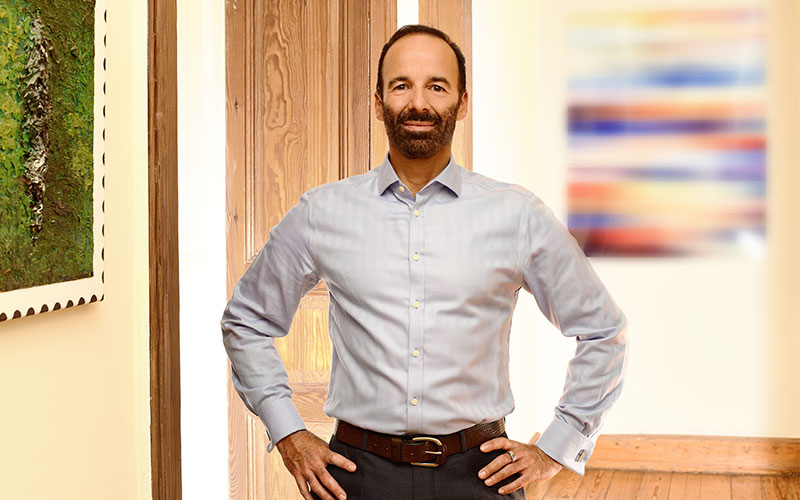By Michael Stuber, the European D&I Engineer

Pledges & partnerships, campaigns & charters: Publicly visible D&I initiatives have soared across countries and industries. Despite the substantial resources that are invested in these formats, evidence suggests that workplace and business realities continue to include racism, sexism, ageism, or homophobia—contrary to what the initiatives aim to convey. Hence, we should ask ourselves the following questions:
- Are we prepared to reconsider whether we made the right assessments in the first place?
- Are we willing to listen to critical voices as much as we “like” and “share” success stories?
- Are we ready to critically reflect on our design to drive D&I-related change?
Numerous public campaigns in which hundreds of blue chip corporations participate create the impression that D&I is top of mind in the C-suite, in the HR world, and in operational business. The fact that the number of platforms and partnerships is growing suggests that the level of activity has been increasing. Such external efforts are, by definition, mainly geared towards external stakeholders, while they also reinforce internal messages of commitment. One side effect of this, however, is sometimes overlooked: Upper management, for example management boards or D&I councils, gets the impression that their organization is actually doing great and that nothing more could be done, nor anything better.
Checkbook diplomacy plus grassroots engagement?
Looking at the substantial budgets companies are allocating to their participation in public programs, more questions arise: Campaigns and programs, often led by expensive “knowledge organizations,” charge 20,000 to 50,000 EUR or USD per year. Engaging in several schemes therefore equals a significant investment, relative to the overall D&I budget. At the same time, more and more companies are increasingly relying on “voluntary” D&I engagement across leadership levels. This is explained by saying that D&I is everybody’s responsibility. While grassroots and voluntary engagement used to be the standard model (not necessarily appropriate everywhere) for ERGs, this approach is now spreading and applied to D&I champions (in-business or onsite), or regional or functional D&I co-leads.
Investment versus impact
Looking at the long-term development of D&I, many agree that a lot has been achieved in terms of more equal opportunities for, as well as visibility and inclusion of, members of traditionally disadvantaged or marginalized groups. However, a widespread focus on gender and representational KPIs seems to superpose perceptions that clearly indicate that there is still a long way to go in terms of cultural KPIs that illustrate, for example, levels of belonging. Glassdoor, for example, found that some three in five U.S. workers experienced discrimination based on their age, race, gender, or LGBT identity. Regarding racism, 42 percent of American workers said they have experienced or seen this specifically.
Similar picture in other geographies
In the UK, one year after the national Race Disparity Audit, a survey found that BAME individuals experience vast everyday biases: 43 percent were overlooked for a promotion (vs. 18 percent for whites), 41 percent were assumed not to be British (due to ethnicity), 38 percent were wrongly suspected of shoplifting (vs. 14 percent for whites), and they were three times more likely to have been thrown out or denied access to a restaurant, twice as likely to have experienced rudeness from a stranger or been mistaken for staff in a restaurant, shop, or bar, than whites. A lot more data from various countries relating to the topics of disability, LGBT, age or migration provide vast evidence that there is a discrepancy between the public success stories, the focus on gender and representation, and related budget allocation on the one side, and the broader experience of people from diverse background in the workplaces at large.
Symbolic value versus changing paradigms
Looking at the landmark activities of past years, many followed from the idea that impact can be created by activities of high symbolic value. This value could either be generated by stakeholders (usually from top two tiers) or by a strong focus on one issue (usually women in senior management or a former taboo topic). The belief that a few high-profile initiatives would, in combination with solid alignment of HR processes, create a change energy that would spill over into the wider organization has apparently not been realized. Today, we know that this expectation was not realistic in the first place: Applying business methodologies (like setting harsh KPIs), selecting two or three key issues and delegating engagement in the name of “inclusion” has little chance of having an impact on complex corporate cultures that were formed and stabilized over decades.
Without a strong change mission, no impact can be expected
The digital transformation provides a strong example: It is clear that almost everything will change for almost everyone, as business becomes more and more digital. For D&I, we need to become just as clear, going forward: In order to make progress, reap benefits, and be thoroughly successful, companies, their managers, and all employees need to change many more established assumptions, unwritten rules, and invisible norms. Otherwise, we keep reproducing them in the D&I field and new business models will eventually make the same D&I mistakes that were made in the old economy. Both are already happening:
- Some D&I projects that dominate the field apply traditional mechanisms of power (e.g. protectionism, populism, or nepotism) and play too much by the established rules to be able to have a change impact on them.
- Start-up firms from the past 15 years, often in hi-tech fields, were expected to create a new business culture; however, many of them have achieved neither improved numbers nor cultural realities that reflect D&I any better than the old-school corporate model—a model that the new startups have looked down upon, at times.
Both examples show that a more critical, self-aware, and certainly, much deeper look at D&I issues, including corporate processes and above all, corporate and leadership cultures, is required in order to be impactful going forward.
A more thorough review of some relevant issues and four steps to address them, can be found in the special section “Resilient D&I” in the previous issue of this magazine (Fall 2019).

Michael Stuber
Michael Stuber’s company hosts a D&I knowledge blog called DiversityMine, which contains more than 1,900 articles. He contributed an article on the future of D&I to the fall 2017 issue of PDJ and wrote about diversity and group think for the magazine’s fall 2018 issue.






